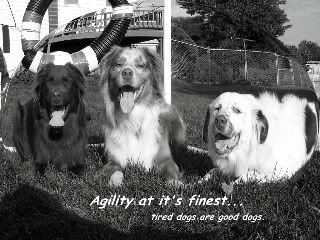Here is some more info in it. Hope this helps!
A common skin disease of dogs, demodectic mange (canine demodecosis) is caused by the mite Demodex canis. This mite is found as a normal resident in the hair follicles of all dogs. Mites are naturally transmitted from nursing mothers to their puppies within the first few days of life. Signs of disease appear only when mites reproduce unchecked and occur in unnaturally high numbers .
In mild cases, signs of demodectic mange include itching and scratching, reddened or scaly skin, blackheads, and patchy hair loss. More severe cases are accompanied by widespread hair loss, pustules (pimples), and a crusty appearance of affected areas. The head and feet are most commonly involved.
The exact reasons that dogs develop mange are not fully understood, but genetics and immune suppression both play a role. A tendency to develop demodicosis runs in some families, with the same parents consistently producing affected puppies. While all breeds are susceptible, some are at increased risk. Some of the breeds in which demodecosis can be particularly common or severe are Old English Sheepdogs, Dobermans, Boxers, Shar-Peis, Shih-Tzus, and Lhasa Apsos. Immune suppression due to underlying diseases (such as Cushings’s disease and hypothyroidism), or drugs (like steroids and chemotherapy drugs) may increase the risk of a dog developing mange as well.
Mange is diagnosed based on signs and history combined with deep skin scrapings. When viewed under a microscope, these scrapings reveal mites recovered from the hair follicles.
Demodecosis is often described by its age of onset and its distribution on the body. Dogs under 1 ½ years of age suffer from juvenile-onset mange. This form is often hereditary. Nearly half of all dogs with juvenile-onset demodecosis will heal by themselves. The other half, however, may experience secondary bacterial infections or other complicating factors that will require medical treatment. Demodectic mange in dogs over 2 years of age is classified as adult-onset, and usually occurs secondary to an underlying cause. Successful treatment of adult-onset mange relies upon identifying and correcting the underlying cause.
Distribution patterns of mange are described as focal or generalized. Focal mange affects a single area of the body. Generalized disease involves either the entire face or two or more feet. These classifications help veterinarians develop a prognosis for the treatment of mange.
Treatment consists of insecticidal dips and antibiotics to treat secondary infections; additional treatment of underlying medical conditions may also be necessary. The course of treatment lasts for several months in many cases and can be quite frustrating to both pet owners and veterinarians. In addition to treatment for mange, dogs that develop the generalized form of demodecosis should be surgically neutered to ensure that they do not breed, producing more susceptible dogs.
Prognosis for successful treatment is best in young dogs with localized disease. Older dogs, and those with generalized or complicated mange are more difficult to treat.








 Reply With Quote
Reply With Quote
Bookmarks